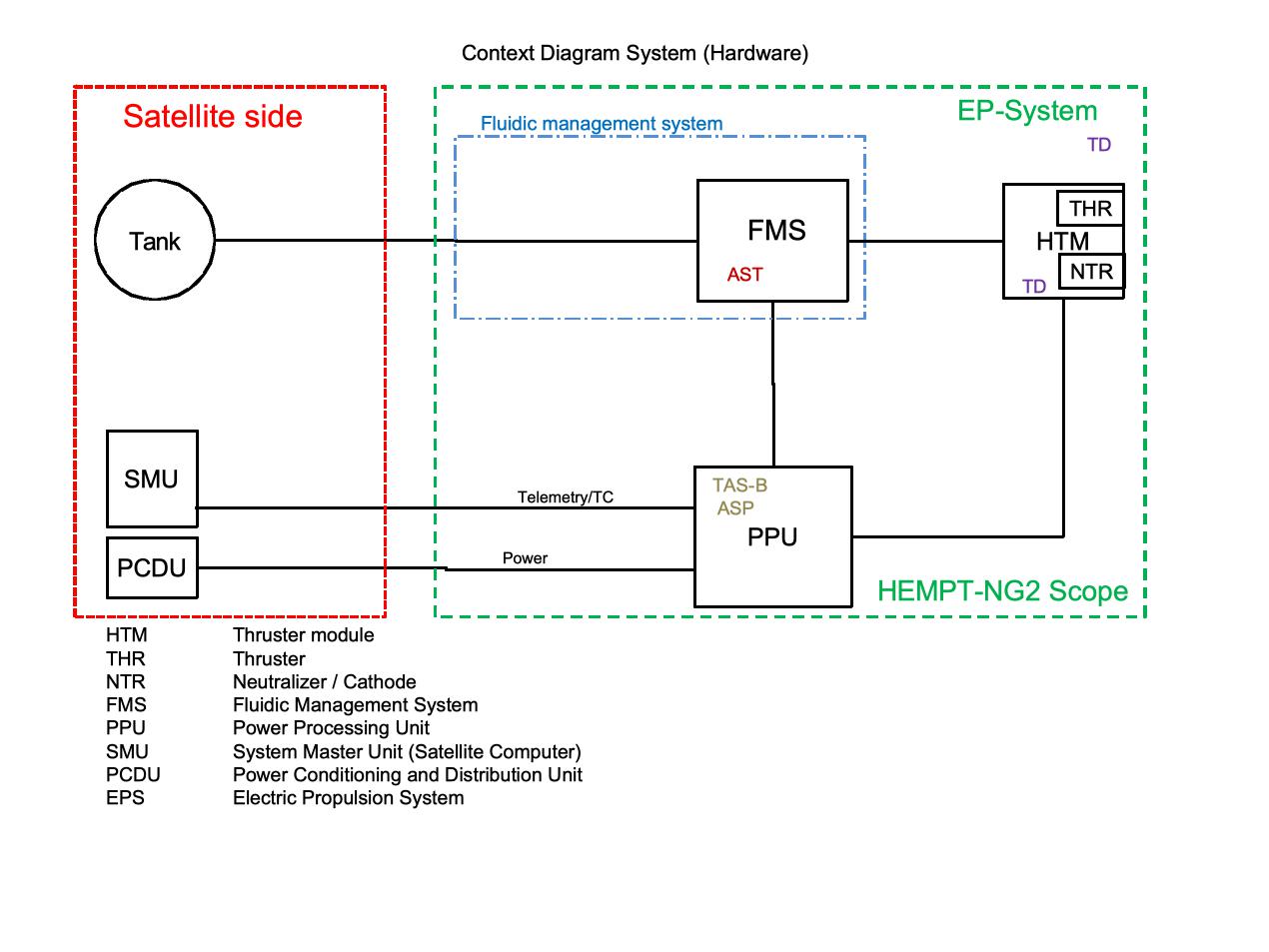The HEMP-Thruster concept
The HEMP-Thruster concept is an ion propulsion technology that is based on the use of permanent magnets for plasma confinement. Through this confinement there is a very low level of plasma-wall interaction and the technology provides excellent lifetime of the thruster which is a unique feature of the HEMPT technology.
The plasma is generated in a DC electric field applied between the anode and cathode electrodes and the ions are accelerated at the magnetic cusps created by the alternating polarity of the permanent magnets. This concept allows high acceleration voltages enabling a high specific Impulse (ISP) and in consequence a drastic reduction of propellant consumption.
Minimal complexity and economic competitiveness
Since the HEMPT-NG EPS concept has minimal complexity, it provides an excellent basis for economic competitiveness.
The HEMPT technology has been pushed to a high TRL in the frame of the DLR funded HEMP-TIS project for small geostationary telecom applications. The HEMP Thruster Assembly HTA 3050 (full EPS) has reached TRL 8 with the completion of the lifetime test and has reached customer acceptance and release of delivery of flight units to the customer.
The HEMP-Thruster concept is an ion propulsion technology that is based on the use of permanent magnets for plasma confinement. Through this confinement there is a very low level of plasma-wall interaction and the technology provides excellent lifetime of the thruster which is a unique feature of the HEMPT technology.
The plasma is generated in a DC electric field applied between the...
Context diagram
The figure shows the system context diagram of an EPS with the delimitation of the H2020 HEMPT-NG2 scope. The system is comprised of four main parts, the thruster module (HTM) which includes the thruster itself (THR) and the neutralizer (NTR), the fluidic management system (FMS) that supplies the thruster module with the propellant gas, and the power processing unit (PPU) that supplies the thruster with electric power and controls the FMS and the thruster module.
The FMS is connected to the propellant tank and reduces the tank pressure down to the outlet pressure of the FMS. The PPU is connected to the electronic systems of the satellite.

HEMPT-NG EP components
In course of the precursor HEMPT-NG project, a set of EP components has been developed, that form a full EP-System as indicated in the picture on the right. This system provides higher modularity and flexibility in the allocation on spacecraft level resulting in an easier allocation, as specific unit constraints combination is avoided.
This set of components has been tested on bread board / engineering models up to system level tests confirming their interoperability, versatility and most important the absence of necessity for coupling testing on recurring units.


